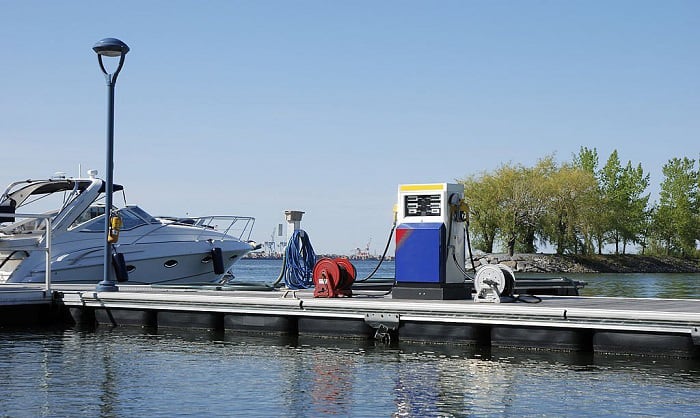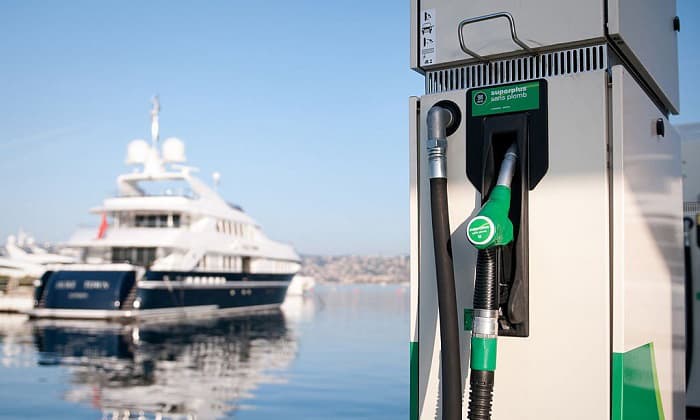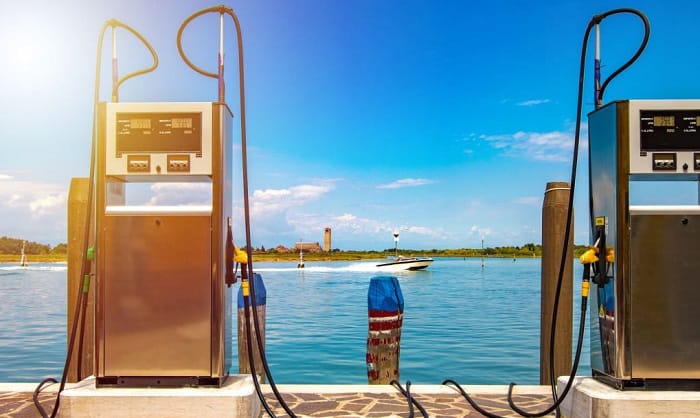There are certain critical situations for any watercraft, be they personal boats or jet skis. Among situations where we need to be extra careful is when filling the fuel tank of our ride. Do you ever wonder how full should you fill the fuel tank on a PWC?
In this article, we’ll take a look at some important steps for filling the fuel tanks of smaller watercraft. We’ll discuss how much fuel we should have, and look at a few things that people should avoid doing.
Keep reading to learn more.
Table of Contents
Filling the Fuel Tank
When filling the fuel tank of any watercraft, there are a few things we should always keep in mind. One of these is the maximum level of fuel that we should have in the tank. While it may seem like a good idea to maximize the space in the fuel tank, it’s important to leave space in the tank for safety.
In general, boats should at most have 90% of the fuel tank filled. However, this is a rough estimate, and it may be difficult to be as accurate with smaller fuel tanks such as those on personal watercraft like a jet ski or a small boat.
The Maximum Level of Fuel on PWC
To be more precise, leaving a 2-inch space in the fuel tank is a good working rule. This means two inches from the top of the tank, excluding a possibly elevating top section, which is designed to always be empty.
But if there is already space for air incorporated into the design of the fuel tank, is the two-inch allowance still necessary? The answer is yes because that little bit of space at the top is just insurance. The additional two inches of space will ensure that there will be enough space for the expansion of fuel regardless of the situation.
If There Is Not Enough Space in the Fuel Tank
In case there is not enough space inside the fuel tank and the fuel expands from the heat from the engine and the weather, what exactly would happen? In that case, there will be a high risk of fuel spillage. For any watercraft, fuel spillage means a risk of fire, which should be avoided at all costs.
Even if the fuel itself does not spill, harmful fumes from the combustion of fuel could also produce the same risk of fire. Having to refuel sooner is therefore preferable to having to deal with accidental fire, so remember to leave that two inches of space when fueling.
Important Steps to Take When Refilling the Fuel Tank
How should you fill the fuel tank on a PWC? To answer this question, there is more to consider than just the amount of fuel to store in the tank. Below are a few important steps to take whenever we are dealing with fuel for our personal watercraft.
Step 1: Turn off the engine before filling the tank
Fuel is flammable and combustible, which means we should not expose it to high temperatures carelessly. To be on the safe side, it’s a good idea to turn off the engine of your PWC to avoid any sudden exposure to heat. This will also help the fuel settle down faster.
Step 2: Check for spillage
Fuel spills should be avoided for any watercraft. This is why it is important to check for any spills before going on your way. Be sure to clean any spills properly should you find any, and double-check for good measure.
It’s also a good idea to check the entire fuel system from time to time, as the vibrations from the engine may also cause loose connections where fuel may leak. It’s important to always keep an eye out for such things.
Step 3: Clear the fumes
The smell of fuel is a good indication of a leak or spill. That’s why after refueling, it’s a good idea to let the fumes clear out before starting the engine. Open the engine compartment and let the fumes clear out from there as well.
If you smell gas or fuel, stop and check as soon as possible whether you’ve just finished refueling or you’re in the middle of a trip.
Things to Avoid
1. Refueling in a hurry
When we get used to doing certain activities, we tend to hurry since we think we already know enough to be able to breeze through the whole process. However, it doesn’t hurt to double or even triple-check after every refueling.
Since this concerns our safety, it’s well worth the extra few minutes, especially if it will spare us the risk of injury or even death.
2. Reinserting the fuel nozzle
When we’re refueling, sometimes we may find that the flow of fuel shuts off automatically and the fuel may be a bit below the level we’d like. Some people reinsert the nozzle to reset the sensor and let out a bit more fuel.
However, this practice frequently leads to fuel spillage and should be avoided. If it’s just a bit of fuel that’s lacking, the safer thing to do is to just leave the fuel level as is.
3. Tilting the PWC or boat
There are things that people do as a routine, and something that many people do when filling a liquid container is tilting the container to maximize space. However, this is something that should be avoided when refueling your boat or PWC. Tilting the tank or PWC may also cause fuel spillage.
As mentioned earlier, filling the fuel tank completely should be avoided as a safety precaution. By not tilting the tank or PWC, we’ll also allow the fuel to settle more quickly.
Conclusion
Now you know all about what to do and what not to do when fueling your watercraft. While keeping a close eye on so many details may seem tedious, it should be worth the effort since it concerns our safety.
Next time you hear others asking how full should you fill the fuel tank on a PWC, don’t hesitate to share what you know. After all, it’s always better for more people to become aware of safe practices when it comes to water vehicles.
Remember to boat safely.

“My intention from the first day establishing Boating Basics Online is to provide as much help as possible for boaters who want to experience a first safe and convenient trip. So feel free to join us and share your beautiful journeys to the sea!”



